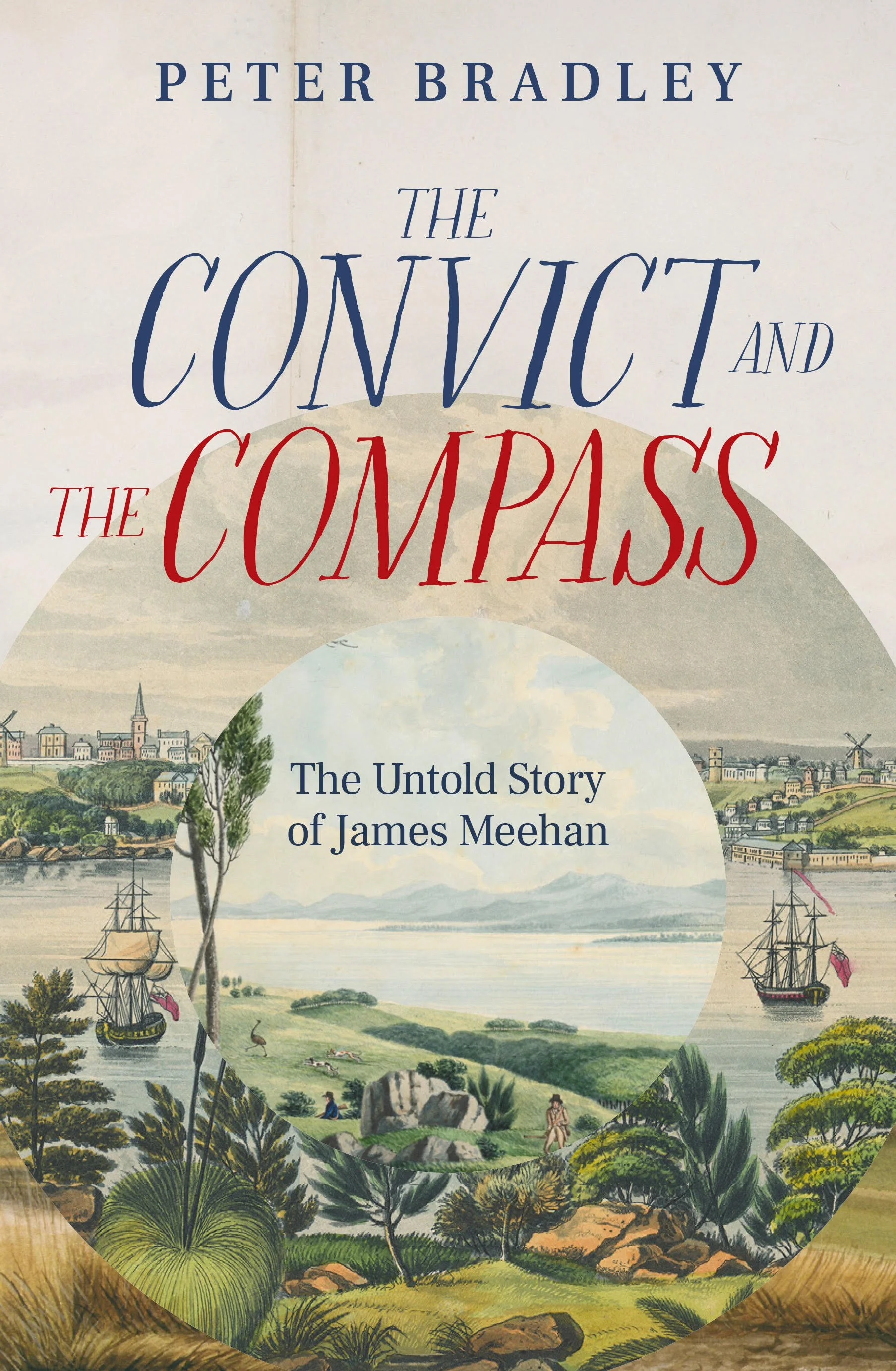Books
In Bookstores on November 11, 2025
The Convict and the Compass: The Untold Story of James Meehan
While the feats of well-known surveyors and explorers of the early 1800’s have become legendary, it was an Irish convict, James Meehan, who would help shape the foundations of modern Australia with his meticulous surveys and town plans.
For decades, he could be spotted marching across a farm with his trusted compass and chain, or striding through untamed bushland from New South Wales to Victoria and Tasmania.
Universally respected despite his lowly start, Meehan aided the Irish, Catholic, emancipist and convict causes. Governors King and Macquarie held him in high regard and with their backing Meehan quickly rose from indentured servant to acting surveyor general.
Yet, despite measuring every land grant in New South Wales from 1803 to 1822 he was denied the office of surveyor general due to his convict background - and all but forgotten - until now!
Convicted
Convicted narrates a fascinating history of colonial Australia retold through three generations of Peter Bradley's three ancestors: a father, son and grandson.
James Bradley was a First Fleet convict found guilty of stealing a white linen handkerchief worth two shillings and sentenced to seven years transportation to Australia.
Joseph Bradley worked his life in the most dangerous occupation of the time – whaling – and despite his parents being uneducated and illiterate went on to write a journal about his experiences, rich in history and insight.
Roland Bradley was a man of unionism and politics, and like his father and grandfather took up the fight against the rich and powerful through his involvement with the early Maritime union.
Following the early struggles of a fledgling colony to nationhood, Convicted is an engrossing and highly imaginative retelling of the story of one family, entwined with the history of this country from the landing of the First Fleet in 1788.
The Wreck of the SS Kanahooka
The Wreck of the SS Kanahooka is the journal of Roland Robert Bradley.
Roland was a man of unionism and politics, and like his father and grandfather took up the fight against the rich and powerful through his involvement with the early Maritime union. In 1894, he wrote an account of surviving the shipwreck of the SS Kanahooka, which forced its castaways to wander the wilderness of North Queensland for 18 days.
Adventures
Adventures of a Native of Australia when Astray from his Ship, the Baroque ‘Lynx’ (A Whaler), and his consequent Cruise in a boat on the Ocean. A True Narrative.
by Joseph Bradley c. 1860
Re-issued and Annotated by Mervyn D. Cobcroft, 1988.
This book is about two of Joseph Bradley’s whaling voyages on the east coast of Australia in 1831. On both occasions, Joseph's boat became separated from the whaling ship 'Lynx,' and it took weeks for him and his crew to find the mainland and return to civilization. This is an amazing story of survival, courage, and determination.
Cruise of the Ariel
A Nine Months’ Cruise in the “Ariel” Schooner from San Francisco in Company with the “Wanderer” of the Royal Yaght [sic] Squadron, belonging to Benjamin Boyd, Esq.
by Joseph Bradley c. 1860
Re-issued and Annotated by Mervyn D. Cobcroft, 1991.
This book is about Bradley’s voyage from San Francisco to Sydney via Hawaii and the South Sea islands. In 1851 Benjamin Boyd met Joseph Bradley in San Francisco and persuaded him to sail his ship, Ariel, in convoy with his other ship, Wanderer , back to Australia. At one point the two ships separated and for the next nine months Bradley scoured the islands of Hawaii and the South Pacific in search of Boyd. This is a great story of courage and determination as Bradley battled the sea and the unknown perils.
Reviews for Convicted









